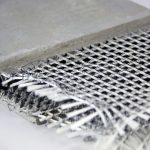Owners and builders should be seriously concerned about the concrete curing process because it can significantly influence concrete characteristics. This article describes the concrete curing process and the methods used in the curing process.
Curing concrete is the process that prevents the recently poured concrete from drying too rapidly. This is to ensure that the concrete will acquire the desired chemical and mechanical properties. If the concrete drying process is uncontrolled, the concrete mix will not acquire the desired binding strength between the constituents. The aggregate will be vulnerable to cracking, and the concrete may not be able to withstand the applied structural loads. There are numerous factors that need to be considered thoughtfully to ensure proper concrete curing, including water, temperature, time, and wind. The compressive strength of concrete that has been properly cured is 75 to 95 per cent more than the concrete that has not been cured.

There are several methods for concrete curing, and the selection is dependent on the application. The main aim of a proper curing is to maintain an adequate quantity of water in the mix – for a specified time. This ensures maintenance of an appropriate temperature, and permits the concrete to acquire the desired properties. Water is poured on the concrete surface to substitute for the water that has been, or is, evaporating. Alternatively, the concrete is sealed adequately to minimize water loss due to evaporation or leakage. It is pertinent to realize that the quantity of water added is in accordance with the water lost, and any additional water may affect the water cement ratio, and assist in the weakening of the concrete. It is difficult to establish the precise rate of water evaporation and leakage, due to which the quantities of water added, may not be commensurate with the water loss. Therefore, an alternate technique is to avoid the wind, protect the concrete from sun rays, and to arrange a cool environment for the concrete. A suitable evaporation retardant chemical can also be sprayed to develop a fine film on the concrete surface that prevents water evaporation. This film layer dissipates during the finishing process.
Curing Defects In New Concrete
Some defects develop on the concrete surface due to improper curing, and can affect the material strength and finish. The repair of such surface defects is complicated and expensive. Even if appropriate repairs are completed, the finished surface achieved will not be comparable to the surface that has been properly cured. Therefore, all efforts should be directed to ensure proper curing to obtain appropriate finish and strength. Curing has a significant effect on the characteristics of concrete such as durability, strength, permeability, and volume stability. Surface strength will be reduced considerably with defective curing. The concrete strength is influenced by the crystal growth in the concrete environment. The crystals are developed due to the process of hydration. The crystal growth may not be proper if water is not used in sufficient quantity. The crystal growth is facilitated by water that surrounds the sand and gravel mix, causing a strong bond with each other.



Comments are closed